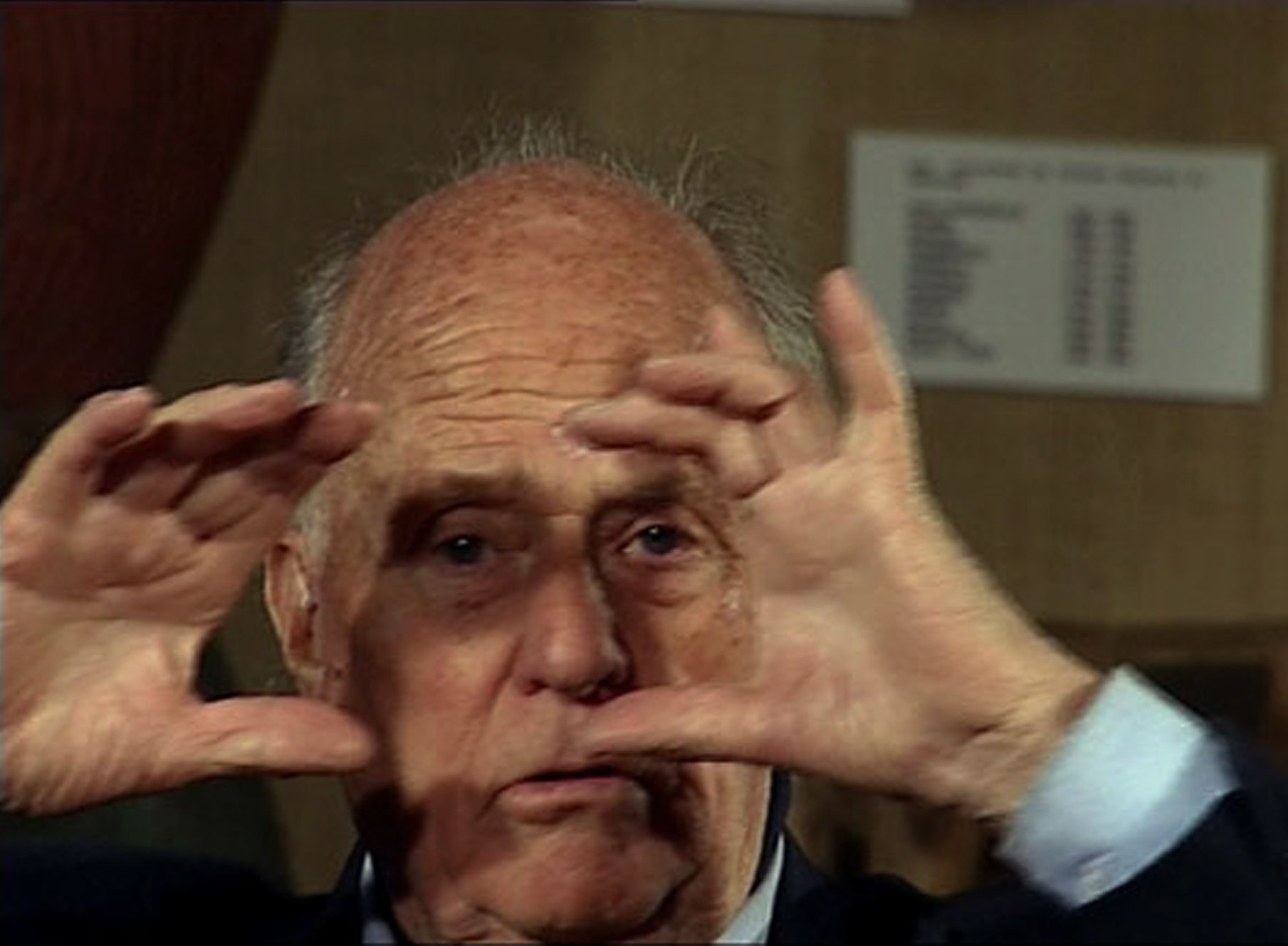
‘The anthropologist and filmmaker Jean Rouch died in northern Niger on February 19, 2004. At 86 years old, he left behind a legacy of over 120 films, the bulk of which were recorded in West Africa.
‘Ironically, perhaps, Rouch is best known for the groundbreaking documentary Chronicle of a Summer (1961), which he shot in Paris with the French sociologist Edgar Morin. Chronicle sought to capture the texture and feel of Parisian life during a particularly fraught moment of French history, to tease out those complexities, and to offer viewers a window into how ordinary individuals were navigating such complicated times. Making use of cutting edge technology and innovative filming techniques, Chronicle launched the cinéma vérité movement and secured Rouch’s place in film history.
‘But Rouch’s work in West Africa was no less revolutionary. Characterized by what he called “shared anthropology” and “ethno-fiction,” Rouch’s films – even as early as the 1950s – illustrated a profound rethinking of both anthropological and film practice. Collaborating with his African subjects, and combining fiction and non-fiction techniques, his practices blurred traditional distinctions between subject and observer, as well as those between documentary and fiction film.
‘Jean Rouch may not be a household name, but some of the world’s most revered filmmakers — from Jean-Luc Godard to Werner Herzog — are indebted to him. The French filmmaker pioneered the concept of “ethno-fiction,” fictional films built around the lives of everyday people, and developed the bulk of his filmography out of time spent in Africa. His 1958 feature Moi, un Noir follows the daily routine of a trio of Nigerian immigrants off the Ivory Coast who imagine themselves as movie stars, and its blend of jump cuts and amateur performances reportedly inspired Godard’s 1960 debut “Breathless.”
‘Inspired by filmmakers like Robert Flaherty (Nanook of the North) and Dziga Vertov (Man with a Movie Camera), Rouch was an innovative and important figure in the French post-WWII film scene, working alongside French directors of the New Wave, serving as President of the Cinémathèque française, founding the Comité du film ethnographique at the Musée de l’homme in Paris, and inspiring the Direct Cinema movement in the U.S. Indeed, in 1968, Jacques Rivette proclaimed: “Rouch is the force behind all French cinema for the past ten years, though few people realize it.”
‘Through his reflexive filmmaking techniques, Rouch not only recorded events, he became an active participant in whatever event he was filming. With his novel and fresh approach, he created an utterly unique theory and practice of ethnographic film which illustrated that – for Rouch, at least – the cinematic experience was first and foremost a shared one.’ — maitres-fous.net
____
Stills






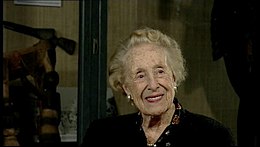


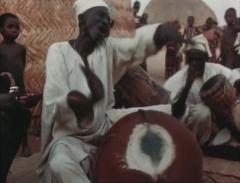















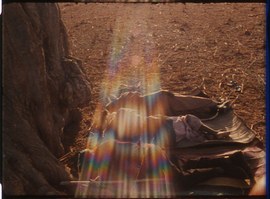

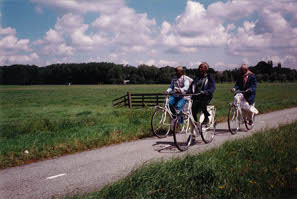


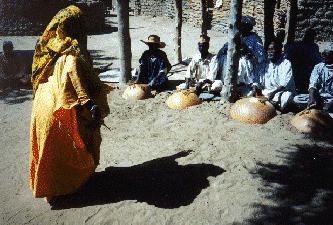









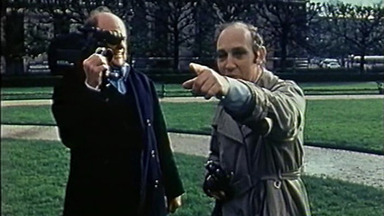
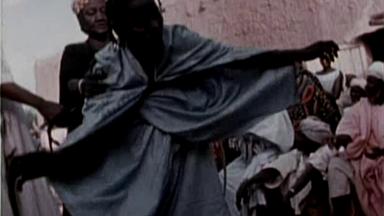
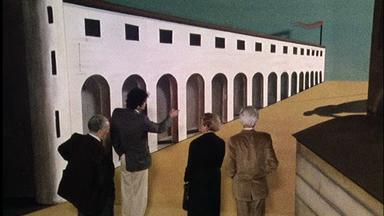
















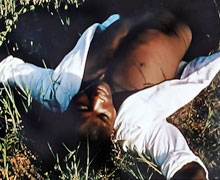
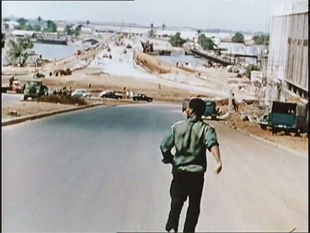





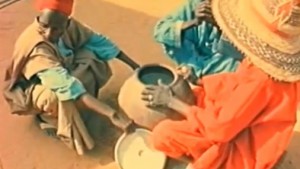









____
Further
Jean Rouch Official Site
A WEBSITE DEVOTED TO THE STUDY OF JEAN ROUCH’S FILMS
Jean Rouch @ Senses of Cinema
Jean Rouch @ IMDb
Jean Rouch: A Long-Overdue Homage
Podcast: Jean Rouch, l’ethnologue à la caméra
Jean Rouch: Another Way of Doing Anthropology
Podcast: Jean Rouch, l’Homme-Cinéma: “Ingénieur, ethnographe, cinéaste, il était avant tout un artiste”
Jean Rouch, le cinéaste qui découvrit le fleuve Niger « petit à petit ».
Jean Rouch @ The Criterion Collection
Jean Rouch, un griot gaulois
Adventures with Rouch
Jean Rouch, l’ethnologue-cinéaste
8 films by Jean Rouchb @c Icarus Films
Jean Rouch obituary @ The Guardian
Jean Rouch @ Ubuweb,
Jean Rouch, le cinéaste qui découvrit le fleuve Niger
Roots of the French New Wave are evident in ‘Eight Films by Jean Rouch’
Almost 60 years ago, an unorthodox film tackled race and racism in the classroom
A Tribute to Jean RouchJean Rouch: the Creative Combination of Opposites
Respecting the Future in the Life and Cinematic Work of Jean Rouch
____
Extras
Jean Rouch Dogon Interview
Jean Rouch and His Camera in the Heart of Africa
Jean Rouch – Possessing Vision
Jean Rouch on the future of Visual Anthropology
JEAN ROUCH – CROSSING BOUNDARIES
________
Interview (1967)
from Film Comment
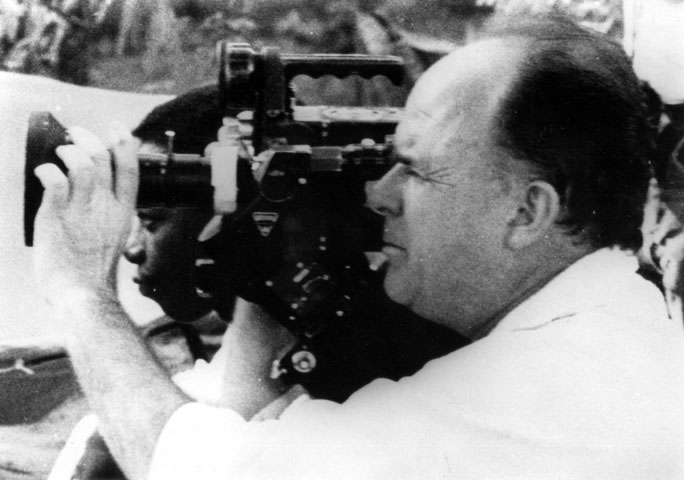
People say that you and Godard have had a bad influence on young filmmakers: ever since you began using unorthodox methods and materials, just about anyone thinks he is capable of picking up a camera and making a film without having first learned the craft.
I think that charge is idiotic. If people are, in fact, making films, and if we have enabled cinema to slip out of the stranglehold of ridiculous rules and industrial patterns that films have been buried in until now, then it’s a very good thing. But if we have opened the door to a lot of mediocrity because every amateur is making films, then what of it?
That there are now a lot of people making films today is good enough for me. Our influence is not a bad one when we have encouraged people to make films who were not making them before. We are not responsible for the fact that some of them have made bad films. Some of these people will one day make good ones!
What films using your improvisational methods have you done recently?
The first is a film made up of a series of sketches called Paris Vu Par . . . that is, Paris Seen By six directors: Claude Chabrol, Jean Douchet, Jean-Luc Godard, Jean-Daniel Pollet, Eric Rohmer, and myself. Each sketch takes place in a different sector of Paris. My film is the story of a suicide at the Northern Lines Railway station: La Gare du Nord.
The story is simple: a young girl argues with her husband because she lives near the Gare du Nord and her life is quite dull. She gets mad at him over breakfast and walks out. Suddenly she is almost run down at a street corner by a car driven by a young man who seems quite seductive. He invites her to run away with him, to live a wild adventure of love. He offers her everything she had criticized her husband for not giving her. But, either by good sense or by her bourgeois upbringing, she refuses to go with him, and the young man abruptly turns and jumps off the bridge on which they’ve been walking, onto the tracks below. The tone of the film comes from the fact that we live through the 20 minutes—without a visible cut—because the film is made in two 10-minute takes, with the splice hidden by a passage into a dark area. We live through everything leading up to the suicide: in a sense, we, too, become involved and, in a way, responsible for the suicide.
The second film I’ve finished recently is another sketch, this time one of four short films to be released together under the title The Fifteen Year-Old Widows. Each sketch takes place in a different country. They were directed by Teshigahara in Japan, Michel Brault in Canada, in Italy by Gian-Vittorio Baldi and in France by myself. With this film I am trying to get myself out of the dilemma of improvised reportage that you have to distort in order to edit. Here the dialogue has been written with the collaboration of the people who play the roles.
Do they play their own roles?
It’s their own experiences that serve as material for the film, but we have interchanged the roles. It’s the story of two girls: one who becomes delinquent and one who does not. But the role of the delinquent girl is played by the girl who is not, and vice versa. I have reversed the roles because I have learned by experience, in making Chronicle of a Summer, that being in a film can have a certain influence on a nonprofessional performer. It’s quite troubling to put people in a film, forcing them to play their own role—either because they feel guilty afterwards or because they become exhibitionists.
This film was censored, I believe.
Yes, I had to cut out the obscene words that the girls used and also—very curiously—the opinions the girls expressed about their families. Now, to me, this film was about the failure of urban families, but to hear the families condemned by the girls was intolerable to French censors—which shows that the problem is indeed a bad one when you can’t even talk about it.
Are you planning more films in Africa?
For quite a while I have thought it would be interesting to make films aimed both at African publics and at audiences of European researchers, to show them just how difficult the African problems are to solve. People are always talking about making basic teaching films, but when you ask the experts, you suddenly realize that no one knows what it is that they want to teach and no one even knows how to present better agricultural or animal husbandry techniques. We know very little, and yet that doesn’t stop us from going into Africa as if we held the key to all those problems!
However, if you take a very serious look at those problems, you discover that they are not at all what we thought. For example: I have done a film on the cultivation of millet [grass seed food]. Millet is at present one of the basic food-stuffs of those people who inhabit the savannah. And it so happens that it takes three to four months of work each year to grow millet. Now, the problem of improving the cultivation is relatively complex because the rainy season is very brief, and also there are problems of overpopulation that cause the rapid depletion of all agricultural products. But before trying to resolve these problems you must first know what they are. I thought it was necessary to know how the farmers themselves have attempted to solve their problems. The film I made tries to do nothing more than show how for generations people have solved, by themselves, a certain number of problems by drawing upon local beliefs and upon a philosophy of the relationship of man to nature.
If you like, I’m criticizing all of these experts who foist off on Africa their economic development theories and planning, without first knowing anything about what has gone on before. They are a little like these missionaries who think that they should Gospelize countries they call “pagan” because they aren’t Christian—as if there had never existed another religion before Christianity.
What African problems interest you most?
All of them. But at present one of the most interesting seems to be the attitude of the Africans themselves with regard to our western world: that is, their attempt to separate themselves more and more from our civilization, which they now consider out of date. For many Africans, we are the inventors of techniques, but unfortunately we don’t know how to use them.
Do you see a role for the cinema as an expression of African culture?
Although one cannot yet use the term African Cinema—there are only about five or six short African films in existence—it should nevertheless be pointed out that Africans have picked up the reins and that something is happening. Using non-African techniques, using easy-to-manipulate, improved equipment, Africans have begun to make films. We will soon see, coming out of Africa, films not based on written scenarios, but created on the spot with the camera and improvised by the actors. There is one film already called La Bague Du Roi Koda (The Ring of King Koda) created in this manner. A Mr. Lassam runs a small public film society in Niamey [Niger]. He shows both conventional and ethnographic films. One day his public said to him, “Why don’t we make a film with you?” So they invented a story, they shot it together, and they all looked at it together. In this way they produced a film—in this way a young African, who is almost illiterate, organized a film that became a sort of collective message from a group of people who are entirely illiterate. I think this shows a lot of promise.
The film was shown at a conference on African art held at Genes to prepare for the World Festival of Negro Art in Dakar during Easter, 1966. It was very well received—it brought a bit of fresh air. It was a good thing for young Africans educated in western schools and universities to see, all of a sudden, that what Europe had was not the only truth, that there were people back home in Africa who were bringing a sincere message straight out of the brushlands!
In the years to come, I believe that we shall witness the rise of something we never suspected: an Africa cinema culture. This is something that educated men have completely overlooked, for although there have been ethnographic films about Africa, it is a little sad that African ethnography has always been carried out only by people who come from another world.
For one of the dramas of Africa is this: the more the years go by, the more the gulf widens between the city and the brush, and the more that the African intellectuals are being separated from real African cultural traditions. So I think it’s a good thing that through audio-visual means young African intellectuals can realize that there are other things than Parisian sophistication and that there are also people on this earth whom we can call cultured—men who do not know how to read nor write but who have their own culture—an African culture, and it is in that culture that the young African will find his heritage, and not in ours!
_______________
19 of Jean Rouch’s 109 films
________________
Faire-part: Musée Henri Langlois (1997)
‘Director Jean Rouch invites the viewer to a guided tour through the cinematographic museum Henri Langlois had built in Paris. This documentary is a unique document since the museum burnt down and cannot be visited anymore.’ — Oliver Heidelbach
Excerpt
________________
Madame L’Eau (1993)
‘In search of solutions to fight drought in Niger, Lam, Damouré and Tallou go to Holland, the country of water and mills. They bring back in their luggage a Dutch engineer and the dismountable mill of which he is the inventor. The adventures of the installation of this modern machine provide Jean Rouch with a free narrative in which his poetry and humor are marvelous without betraying the ethnographic eye. “Evoking kinetic energy in a dreamlike way is Jean Rouch’s feat with Madame l’Eau, shot in 1992 between Niger and the Netherlands, won the Peace Prize in Berlin with the following mention: one of the only films where we consider that one of the conditions of development is humor, and I will add: poetry! ” Hortense Volle, Enchanted Africa, France Inter (March 2012).’ — Documentaire sur grand écran
Excerpt
Excerpt
______________
Enigma (1986)
‘A patron inviting a famous forger in his Turin villa to charge him with a painting that Giorgio de Chirico failed to paint during his brief stay in Turin in 1911. Wandering in the city in search of inspiration , the forger meets several times a group of children who wants to leave for Egypt in an abandoned submarine on a bank of the Po, with a philosopher contemplating the world and reading Nietzsche at the top of the Mole Antonelliana and with a young woman enigmatic and ambiguous.’ — Jean Rouch
Trailer
________________
Dionysos (1986)
‘Dionysos is a 1984 French comedy film directed by Jean Rouch, starring Jean Monod and Hélène Puiseux. It tells the story of an American drama teacher who after writing a thesis on Dionysus tries to combine Dionysian rites with the work at a car factory, in an attempt to create the world’s first car built in joyous frenzy. Harlan Kennedy of American Cinema Papers described the film as “entirely lunatic” in his report from Venice, and wrote: “It’s like a 60s hippy charging round the icon-scape of 80s Capitalism with a Super-8 camera and hoping meaning will accrue from the whir of disconnected imagery.”‘ — collaged
the entire film
_________________
Portrait de Raymond Depardon (1983)
‘The director Raymond Depardon is seen with Jean Rouch at the foot of a Maillol sculpture in the Tuileries Gardens discussing the current technical, ethical and aesthetic issues confronting the “cinéma direct”.’ — UniFrance
the entire film
________________
Margaret Mead: A Portrait by a Friend (1977)
‘This frank and loving portrait of the famed anthropologist was filmed after the first Mead Festival by renowned French enthnographic filmmaker Jean Rouch. Together with John Marshall (N’ai:Story of a !Kung Woman), who served as sound recordist, he follows Mead from her office through the meandering corridors of the American Museum of Natural History and down Central Park West as she considers her legacy and muses about the future.’ — harvard.edu
Excerpt
________________
Babatu, les trois conseils (1976)
‘With his camera on his shoulder, the director Jean Rouch blended documentary and fiction and created “cinéma direct” (direct cinema) a method for which he is particularly famous. He brought this love for Africa to Cannes in 1976, showing Babatu, les trois conseils In Competition. The historical feature film tells the warlike, epic tale of chief Zarma Babatu who conquered the Gurunsi lands and grew rich by dealing in slaves. Damouré, Lam, Tallou and other “guest stars” re-enact the adventures of the 19th century warriors.’ — Festival de Cannes
Excerpt
_________________
Cocorico Monsieur Poulet (1974)
‘Lam, Damouré and the faithful apprentice Tallou travel around Niger looking for chickens they would like to trade. At the wheel of Patience, an improbable 2CV tinkered with the means of the edge, they do their best, but the hassles multiply, chickens are rare, the authorities are watching, the Niger River is an impassable wall and a mysterious witch is constantly casting spells on them.’ — Ronny Chester
the entire film
__________________
VW Voyou (1974)
‘The Volkswagen is the go-anywhere car. It is the ideal car for the bush, for the city. It’s the car of the young, the old, the city, the countryside, the dry seasons and the rainy seasons. It is the car of the farmer, the hunter, the sinner, the businessman, the doctor of the family grandfather, draggers and great shepherds. It does not let in dust even when passing a truck. It’s the car of the forest; it’s the car of the mountain. She jumps off the cliff: “There, I think I made a shit” says the driver. “But it repairs very well” and, by a backward scroll, the car goes up the cliff and goes everywhere.’ — Cine Club de Caen
the entire film
________________
Horendi (1972)
‘Among ethnographic or anthropological filmmakers, France’s Jean Rouch was perhaps the only one to rival Margaret Mead and, to the extent that he qualified, Robert J. Flaherty. Horendi is an engrossing, hypnotic, exciting, and surprisingly moving documentation of a seven-day ritual in rhythm and dance, by which Songhai women in western Africa, possessed by spirits, come to terms with these spirits and make peace with them. The film, whose title means “to put on a ceremony or festival,” lasts 72 minutes, not a week; it captures the basic contours of the ritualized dance, officiated by a priest, that sets free two colorfully dressed women, who have been diagnosed as possessed, while a white-clad third woman is roped between them. Male musicians, beating on overturned, hollow wooden bowls, provide the music; the zima also is a man. This is a pure dance film; there are no explanatory title-cards and no voiceover narration, introductory or otherwise: just dance. Rouch’s patient, distanced use of the camera ultimately gives way to some startling closeups of faces.’ — Dennis Grunes
the entire film
________________
Tourou et Bitti (1971)
‘The drums of the past. This shooting script was planned to show the most important moment of a possession ritual, during the course of which men from the village of Simiri demand that the spirits of the wilderness protect the coming harvests from locusts.’ — IMDb
the entire film
________________
Petit à petit (1970)
‘The film was shot in 1970, that is to say after the heroic fifties when Rouch was the companion of Godard or Astruc. But it keeps this freshness of your senseless tone that makes it look unfold with a crazy pleasure. Proof of the freedom of this cinema, the “original” version of Petit à Petit lasted four hours. The one we see today has wisely been reduced to an hour and a half without the cheerful anarchism of play and talk disappearing, with its dialogues in the tasty and approximate French of Africans. Three Nigerian friends founded a prosperous society in Niamey, little by little. They do import-export but keep their personality, Damouré (Damouré Zika) being a leader with Lam (Lam Ibrahima Dia) and Illo (Illo Gaoudel). Damouré goes to Paris to study the construction of “multi-storey houses” that he would like to set up in Niamey. He does wild ethnology and visits the capital for long weeks. Worried, Lam joins him. They buy a luxury car and with two friends and a tramp leave for Niamey. But African life is not suitable for the two girls and the tramp who decide to return. At the end of this wacky round trip, our three friends give up their fruitful society and become humble yet free men.’ — Liberation
Excerpt
_____________
Jaguar (1967)
‘One of Jean Rouch’s classic ethnofictions, JAGUAR follows three young Songhay men from Niger–Lam Ibrahim, Illo Goudel’ize, and the legendary performer Damoure Zika–on a journey to the Gold Coast (modern day Ghana). Drawing from his own fieldwork on intra-African migration, the results of which he published in the 1956 book Migrations au Ghana, Rouch collaborated with his three subjects on an improvisational narrative. The four filmed the trip in mid-1950s, and reunited a few years later to record the sound, the participants remembering dialogue and making up commentary. The result is a playful film that finds three African men performing an ethnography of their own culture.’ — Icarus Films
the entire film
_________________
La Chasse au Lion à l’arc (1965)
‘On the border of Mali and Niger, men live in perfect harmony with the cosmos. The cows graze quietly, even in the company of lions. However, it happens that the cosmic order is broken when a lion decides to attack a cow. It is then ritually decided to go on a lion hunt, which is practiced every four years and requires a very thorough preparation. Poisoned arrows are made, bows are made while dances and incantations are made to prepare the poison, the boto. Traps are put in place and when the animal engulfs, the hunter has only to shoot his arrow …’ — allocine.fr
Trailer
_______________
Gare du Nord (1965)
‘My film is the story of a suicide at the Northern Lines Railway station: La Gare du Nord. The story is simple: a young girl argues with her husband because she lives near the Gare du Nord and her life is quite dull. She gets mad at him over breakfast and walks out. Suddenly she is almost run down at a street corner by a car driven by a young man who seems quite seductive. He invites her to run away with him, to live a wild adventure of love. He offers her everything she had criticized her husband for not giving her. But, either by good sense or by her bourgeois upbringing, she refuses to go with him, and the young man abruptly turns and jumps off the bridge on which they’ve been walking, onto the tracks below. The tone of the film comes from the fact that we live through the 20 minutes—without a visible cut—because the film is made in two 10-minute takes, with the splice hidden by a passage into a dark area. We live through everything leading up to the suicide: in a sense, we, too, become involved and, in a way, responsible for the suicide.’ — Jean Rouch
the entire film
________________
Marie-France et Véronique (1964)
‘This short fiction film by Jean Rouch accompanies two Parisian teenagers who suffer from a lack of tenderness on the part of their parents. At 16, Véronique and Marie-France embody various visions of love, sexuality and the quest for happiness. Will they be able to stay friends despite their differences? A relevant social portrait of bourgeois youth in France during the 1960s.’ — ONF
the entire film
________________
Chronicle of a Summer (1960)
‘Few films can claim as much influence on the course of cinema history as Chronicle of a Summer. The fascinating result of a collaboration between filmmaker-anthropologist Jean Rouch and sociologist Edgar Morin, this vanguard work of what Morin termed cinéma- vérité is a brilliantly conceived and realized sociopolitical diagnosis of the early sixties in France. Simply by interviewing a group of Paris residents in the summer of 1960—beginning with the provocative and eternal question “Are you happy?” and expanding to political issues, including the ongoing Algerian War—Rouch and Morin reveal the hopes and dreams of a wide array of people, from artists to factory workers, from an Italian émigré to an African student. Chronicle of a Summer’s penetrative approach gives us a document of a time and place with extraordinary emotional depth.’ — Criterion Collection
Excerpts & Rouch interview
_____________
La pyramide Humaine (1960)
‘The arrival of Nadine, a new student, in the Abidjan Lyceum is the starting point for a discussion about interratial relationships.’ — IMDb
Excerpt
_______________
Moi, Un Noir (1958)
‘Moi, un noir is a 70-minute colour film shot in 1957 in the Ivory Coast capital of Abidjan. The French first occupied the lagoon area of Abidjan in 1842. Fifty-one years later, it became a colony, soon to be part of French West Africa. Railway links facilitated transport of natural resources such as wood, cocoa and coffee, for eventual exportation. In 1958, the Ivory Coast evolved from overseas territory to a republic, to be led from 1960 until 1993 by President Félix Houphouët-Boigny. Rouch centers his film on a group of young Africans who come south from Niger to find work in Abidjan. In line with their efforts to adapt to the ‘new’ Africa they encounter in the Treichville section of the city, four of the new arrivals adopt nicknames – Edward G. Robinson, Eddie Constantine (in the role of US federal agent, Lemmy Caution), Tarzan and Dorothy Lamour – inspired by actors and characters of feature films made in the US and France. Global mass culture thus furnishes identities and stories tailored to ‘the new universe of the young Africans moving almost without transition from the griot to Hollywood, from tribal myths to the mythologies of contemporary societies’ Modernity in Moi, un noir extends from image to process; that is, from scenes of daily life in Treichville to Rouch’s efforts to relocate filmed ethnography from ‘folkloric’ rural settings to urban spaces. Georges Sadoul links Rouch’s long-term involvement with the Songhay people of Niger to the phenomenon of migration towards urban capitals of the ‘new’ Africa. In such terms, the film is arguably a case study of colonial modernity in which migrant workers involve themselves in new socio-political formations linked to but also between existing Western institutions and their African counterparts . Rouch first engaged the phenomenon of migration in two films – Les Maîtres fous and Jaguar (1967) – he undertook in Africa earlier in the decade. Unlike these two, Moi, un noir is shot almost entirely in urban settings, with pastoral images of Niamey appearing only in flashback towards the end of the film. In Les Maîtres fous, Rouch had filmed the cult of the hauka (literally ‘the new gods’) whose retreats and possession rituals he described as a means of compensating for the realities of their daily lives in the ‘new’ urban Africa. By contrast, the value attributed to imagination and fantasy in Moi, un noir is ambiguous and not clearly redeeming.’ — Steven Ungar
the entire film
*
p.s. Hey. ** Amphibiouspeter, Hi, AP. Oh, crap. Enjoy the shit out of the weekend then. What did your foraging around in Brussels pull up? I’m good, too much work right now, but good work. ** Chaim Hender, Hi. Thanks a lot for your amazing comment to Marilyn. Have a swell weekend. ** Steve Erickson, Maybe it would be interesting to have them listen to music they normally like but on acid and have them discover or imagine its dark, secret subtext. One of the great things about listening to music on acid is how something you’ve always liked casually gets unveiled as something you never could have imagined. I hope you sorted things out to your satisfaction with that editor. Look forward to the interview. Everyone, Steve Erickson has interviewed Jonathan Olshefski, director of the film ‘Quest’, and you can read it. So lucky you to get to see ‘Wormwood’. I’m chomping at its bit. ** David Ehrenstein, Superb piece on Latouche! Much respect! ** John Fram, Hey, John. Wow, that is extremely interesting about the escape room. As you no doubt know I’m utterly obsessed with haunted house attractions, and escape rooms have become a popular manifestation of that, so, yeah. That’s amazing. If it’s not too lengthy to answer, what are the tricks and basic structural ideas used in creating escape rooms? Is there a kind of standard set-up/formula for them in which you play with the details, or … ? I haven’t heard her album yet for no good reason. I will nudge myself to do that this weekend. Thanks a bunch! ** Bernard, Hi, B. Obviously, great, great thanks for your amazing response to the post and Marilyn. Thanks about your ‘CROWD’ excitement. Yeah it’s pretty fucking good, I have to say. I think it’s the most ambitious piece we’ve made, and for a while I really thought we had bitten off far too much for the limited time we had to construct it, but we, and Gisele very especially, actually pulled it off, although I think it will become better and more accurately/complexly realised performance by performance. Anyway, yeah, the response has been amazing, and maybe it will even get to the States since it’s a ‘dance’ piece which seems to be more bookable to US venues. That class you did sounds very cool, to say the least. Is it something you’ll do again, tour? Have a sweet weekend, pal. ** Dóra Grőber, Hi! I know those days, waking up exhausted and never quite perking up even with all the espressos in the world. I trust you got the sleep you needed last night. My day was spent working on the film script. I should have started the assignment, but my head is too inside the film, so I used my brain cells on it. But I have to get on the other today. Today is going to be crazy. You know Johnny Hallyday just died, and he was/is popular and famous and revered in France to a degree it would be very difficult to convey, and today they’re driving his casket all through Paris for people to see, and then it’s being taken to a church where there’ll be a funeral, a huge concert, speeches by Macron and other dignitaries, etc., and that church is a 30 second walk from my front door in Place de la Madeleine, and they’re expecting at minimum 500,000 people to show up, and Madeleine is not that roomy an area, so basically the entire area where I live will be blocked off, overrun with police and the army, and packed wall to wall with people all day. I’m not even sure I will be able to walk an inch down my street, although I’m going to try to go take a look at the JH thing. So it should be nuts. My back is still a bit fragile, but I think its threats are weakening. Have a fun, serene, and exciting weekend! What did you do? ** Justin Bland, Hi, welcome. ** Frank Jaffe, Whoa, Frank! Back in the blog! Good to see you, buddy! Well, I guess it’s good that Jimmy is still working, even if he deserves a whole lot better from what you say. Hm, I should do a James Duval Day. Yes, I will. So nice to hear from you. I’m doing really well. I hope you’ll get to see Zac’s and my new film before too long, ‘cos I’m super proud of it. Take care, and have the best weekend ever. ** Marilyn Roxie, Hi, Marilyn! Thank you again so very much! It seems to gone incredibly well! I’m really proud and honored to have been able to provide the setting. Lots of love, me. ** Chris Cochrane, Hi, Chris! A slightly belated but very, very happy birthday! Oh, no sweat about the no Skype. I’m sure it would have proved very complicated. Yes, I’ll get to you guys with my thoughts on the casting this weekend. I apologise for not having done so sooner. Paris is indeed beautiful, and I am indeed awfully busy, and all is extremely well. And with you too, please, I demand it! Love, me. ** Right. Jeff J threw out the idea that I should do a post on the great French documentary/fiction film director Jean Rouch. I’m not sure how well known he is in the States, for instance. But, if not, or even if so, here’s a chance to get some knowledge of his work under your belts. Please do. See you on Monday.




 Now available in North America
Now available in North America 
Here’s an article I wrote about Rouch in 2013: http://www.indiewire.com/2013/02/africa-and-france-the-work-of-jean-rouch-133848/
Rouch was a great filmmaker, and I do not want to add to the sexual abuse pile-on, but no one seemed to notice when artist Coco Fusco casually mentioned, in the middle of a lengthy article about sexual harassment in the art world, that he harassed her when she was in her 20s and he was 40 years older.
I actually have an awful migraine, and I’m not sure I will make it to WORMWOOD today as a result. Combined wth my back pain, I feel really shitty right now.
I got things sorted out with the editor. I am getting a kill fee for the review he assigned and I wrote then he canceled, and he assigned me Spielberg’s THE POST.
Maybe Sessions and Pence would actually appreciate black metal and industrial music on acid, while I’m sure they’d hate it while sober! I know how I want to the film to end. Having felt like he’s seen God, Pence gives up politics and becomes a beggar. To me, this is his first genuine experience of spirituality in his life, but I know most spectators will view this as LSD ruining his life. I like the open-endedness.
Hey, Steve, with appreciation! from Lynne Tillman. Would love to be in touch again. x
Here’s my review of I, TONYA: https://medium.com/@stevenerickson/i-tonya-crocodile-tears-for-a-martyr-8c1829ce620c
I don’t know what it is, Steve, but every time I hit a “Medium” link it flashes on for a second and then goes blank.
The 3 reviews I’ve done for them are “members-only,” but non-members can read up to three reviews a month. Maybe you’ve hit your limit.
Fabulous Jean Rouch Day! The one key film you left out is Les Maitre Fou (1952 I think) which is a 20 minute short shot in an African village whose residents stage an annual rite in which they assume the personas of their white “Masters” from the colonial period — a Judge, a Priest, a General et.al. This totally gobsmacked Jean Genet and inspired him to write one of his greatest theatrical masterpieces The Blacks: A Clown Show
In other “News” And the Oscar Goes To. . . .Bosie!
Heyo Dennis, Escape rooms are an interesting form if a bit restrictive. They’ve definitely proven to be helpful for writing a novel if only because they force you to think very, very structurally. In a nutshell, the St. Vincent experience was basically a listening party with puzzles going on that weren’t especially complex. It didn’t exactly strain my back.
The biggest piece I designed for the company I used to work for is sort of a “classic” escape room. It consisted of one room, a locked door and a 1 hour time limit. Players were given objects they used to solve puzzles contained in the room and also solved riddles layered into surreal video projection, all loosely based on Dante’s Inferno. To design it, I was handed the parameters of the space, told the high-concept twist (there is a pretty distressing moment halfway in which a live human actor is introduced that was incredibly satisfying to nail) and then was basically given free reign. It was iterated over and over again for about three months, play-tested for a few weeks and then opened to the public. The script-writing bug burrowed into me bad–after working with actors I’m dying to play with some screenplays down the road.
More importantly, though, it helped me to finally learn some very basic storytelling skills (or at least the skills to develop the sort of stories I realized I find most satisfying). First and foremost, you have to grab the audience of an escape room within the first two or three minutes. They need to know what they’re trying to achieve, how they’re going to get there (and how they can fail) or else they’ll never enjoy themselves for an hour. As an extension of this, they have to feel that their small successes are leading logically (even if it’s dream logically) toward the next challenge and, thus, the next success. Those challenges and successes have to scale up proportionally just like a dramatic arc.
Secondly, and maybe more importantly, the writer/designer can’t use a single object for more than one solution. IE, if a player uses a diary they’ve found to open a padlock, the writer should not use that diary for anything else. This simple design decision (I called them “clean lines”) was one of the most difficult things to accomplish in the writing process but when I saw how smoothly they made the experience flow I felt a sort of pride at a piece of work I’ve only experienced a few times in my life. It allowed us to guide players through a very complex environment and feel confident that if they failed they failed on their own account, not because we were being obtuse or inept.
(Thirdly it taught me a lot of basic business shit that I shouldn’t dwell on here, ha ha.)
In the end I’m glad I worked on the games even though they started to feel very constraining–there’s only so many types of locks a person can buy. The book that I’m developing is, at heart, a mystery and, perhaps unsurprisingly, working in a medium that is literally a box of interconnected puzzles has proven to be amazingly helpful in writing it. The rule about keeping the lines clean scales up in all sorts of useful ways: it keeps my metaphors from mixing, it keeps my characters arching elegantly, it keeps my elaborate mystery understandable and it keeps my set pieces from turning to mush. I might find, upon revision, that it actually makes the novel *too* clean and simple (a novel shouldn’t waste any of its pieces but the reader doesn’t necessarily need to see how all of them are being used) but for now it’s getting me through my first drafts.
Sorry if that’s a little long winded. You got me thinking out loud about stuff I’ve never quite delineated, ha ha. Have you done any escape rooms? The company I was working for wanted to open a room in Paris but struggled to find the funding.
J
Here’s Les Maitres Fous.
Well that was taken down Here it is again
The four hour version of Petit a Petit was a big influence on Rivette’s Out 1
This Rouche compilation is an extraordinary gift to us. Thanks, dear Dennis. And Hello, Steve Erickson! Long time. Love xx Lynne
Hi Lynne. I love your books, but I’m not the novelist who lives in L.A. and shares my name. I’m a film critic and short filmmaker/screenwriter who lives in New York.
OH! just seeing this now. You live in NY! maybe we’ll run into each other sometime and talk. I’m in the EV. My best, Lynne
Who hasn’t wanted to dive into a David Hockney pool?
WORMWOOD is a masterpiece, the best thing Morris has done since FAST, CHEAP & OUT OF CONTROL. I like it much more than David Fincher’s ZODIAC,. but that’s the film that feels closest to it. Once it gets released in the U.S., I think there will be lots of debate about whether it’s fiction, documentary, a film or a Netflix mini-series. I don’t care about any of it. It’s the truth. It’s also likely to be #3 on my 2017 top 10 list.
This is a superb Day and I sent a link to William Bennett who was very grateful for it. When I saw the first Cut Hands performance in Edinburgh back in 2008, WB had a Rouch film projected on the wall and I know his work greatly informed the Afro Noise project.
That’s me back in Leeds for a few Xmassy weeks, the redundancy cheque is due in on the 15th and then the Milky Bars are on me. For now I’m watching lots of football on TV and also plan to see a few art exhibitions, including a Beuys show at the newly refurbished Leeds City Art Gallery and also Alina Szapocznikow at the Hepworth in Wakefield.
Hi!
Oh god, yes, I read about the huge memorial for Johnny Hallyday but I didn’t know it was so extremely close to your place! I feel a bit weird asking this (after all, it was a funeral) but how was everything? Could you even leave your apartment in one piece?
And what about the assignment work? Did you manage to buckle down and start it?
My Saturday was kind of a… wasted one because the owner of the gallery asked me to go in and help him prepare for another fair (which is today). So I got up early, went in and waited 3 hours ’til he called to let me know that his back started to hurt so much he could hardly get up so he won’t be able to come in at all. Of course, it’s not his fault and I feel sorry for him but I basically sat there for hours for nothing at all – I literally sold 6 postcards all day. After a day like that, I spend my Sunday in bed just reading and watching old Manic Street Preachers videos/interviews. I sorely needed this time to just… be, finally, on my own.
How was your weekend? I hope everything’s good around there!
Hope your weekend went well, Dennis. I’m not familiar with Rouch’s work; a fascinating range.
Enjoyed Marilyn Roxie’s Twink Studies post, of course. On that note, I just saw Beach Rats. Much more gritty and dark than I expected.
Also enjoying Daniel Kehlmann’s new novella; not sure if it’s your thing though.
Bill
Hey Dennis – This is a fantastic Rouch day. Glad my suggestion was useful and really happy to spend more time learning about his films via this post.
Allergies (or flu?) have been hammering me hard this weekend. Found out that the main art theater complex in the city shuts down next week. When I moved to Charlotte there were 18 art house screens and a vibrant film culture — now we’re down to two screens, thanks to Regal Entertainment buying up theaters and making them blockbuster only or shutting them down. It’s nefarious and really sad.
Any new news about your and Zac’s film and festival premieres? And the TV show with Giselle?
I ran into an old friend today who said that he knows Justin Broadrick and that Broadrick would be totally into the idea of using Godflesh music in my film, and would probably give it to me for free. “Like Rats,” the opening track on STREET CLEANER, is the song I’d like to use (only about a minute’s worth – I love the way it begins with him bellowing slowly “You breed..like rats” over screeching guitars and a loud drum machine.) Earache still owns the rights to that album, but Broadrick now owns his own label, Avalanche Recordings, and issued a live re-recording of STREET CLEANER, so presumably I could use that version of “Like Rats.” Avalanche released Godflesh’s latest album, POST SELF, which came out 10 days ago.